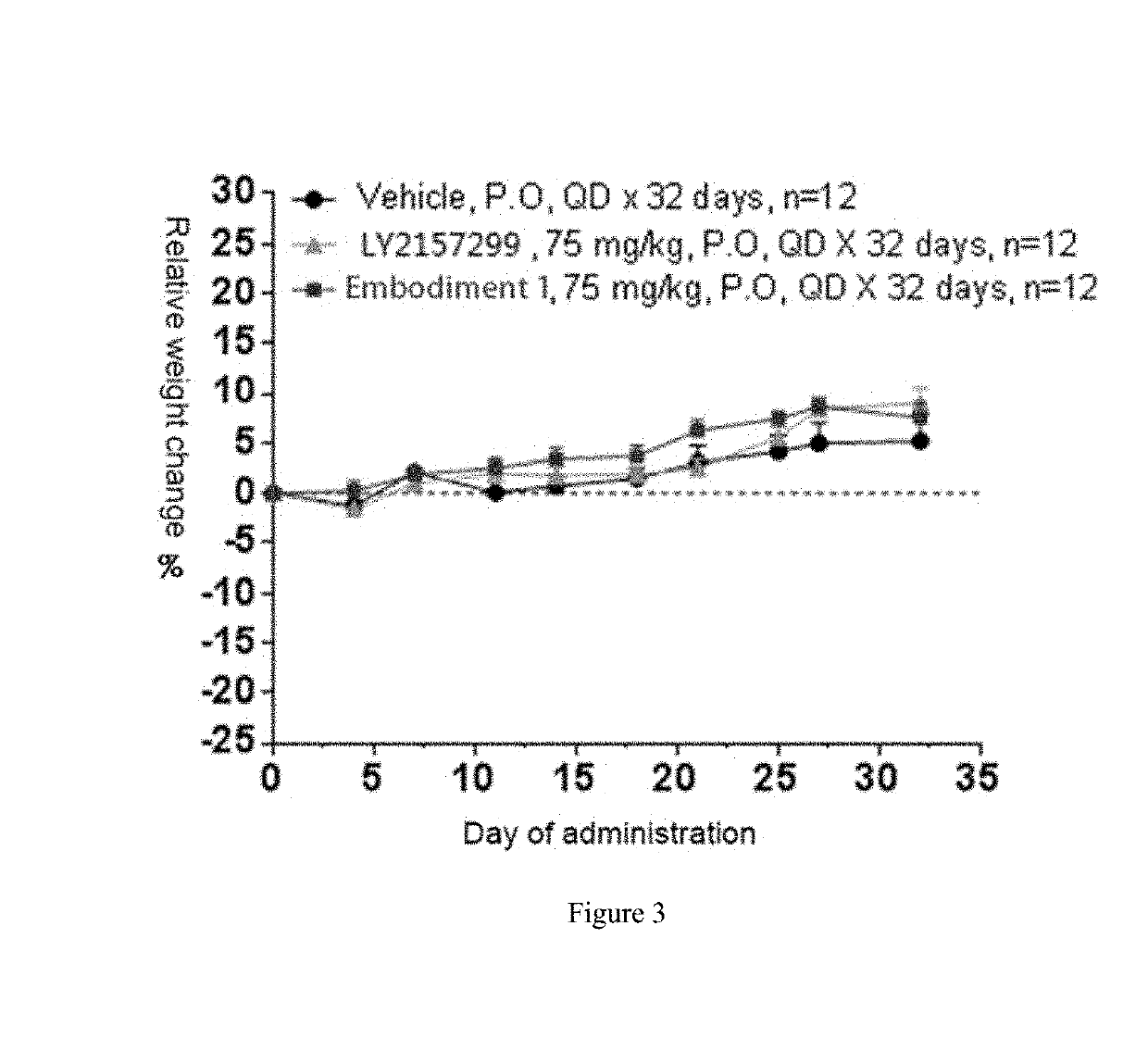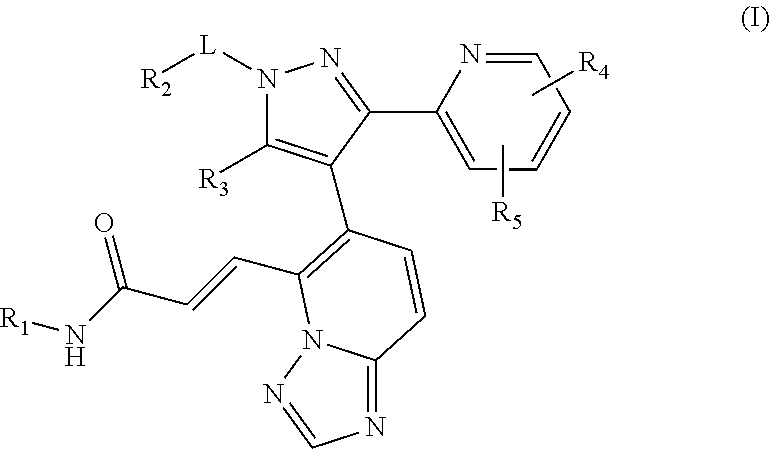Benzotriazole-derived alpha and beta-unsaturated amide compound used as tgf-beta ri inhibitor
a technology of unsaturated amide and tgf, which is applied in the direction of organic chemistry, organic active ingredients, drug compositions, etc., can solve the problems of abnormal signal transduction pathways, achieve superior anti-tumor immune activation, superior biological activity, and achieve the effect of pharmacological action
- Summary
- Abstract
- Description
- Claims
- Application Information
AI Technical Summary
Benefits of technology
Problems solved by technology
Method used
Image
Examples
embodiment 1
[0104]
[0105]Preparation of Intermediate 1-6
[0106]Step A: Ethyl acetate (291.41 mL, 2.98 mol) was dissolved in toluene (750.00 mL), and then sodium ethoxide (135.06 g, 1.98 mol) was added in batches at room temperature, and the mixture was stirred at room temperature for 1 h. Methyl 6-methylpyridine-2-carboxylate (150.00 g, 992.33 mmol) was added to the above reaction solution at 25° C., then heated to 95° C. and stirred for 15 h. The reaction mixture was cooled to 30° C., adjusted to pH 7 with acetic acid, diluted with water (500 mL), and extracted with ethyl acetate (500 mL). The organic phase was dried over anhydrous sodium sulfate, filtered and concentrated under reduced pressure. The residue was purified by silica gel chromatograph (eluent: petroleum ether / ethyl acetate=50 / 1) to give ethyl 3-(6-methylpyridin-2-yl)-3-oxoprop ano ate (120.00 g, yield: 58.35%).
[0107]Step B: ethyl 3-(6-methylpyridin-2-yl)-3-oxopropanoate (120.00 g, 579.07 mmol) was dissolved in pyridine (300 mL), an...
embodiment 2
[0116]
[0117]Preparation of Embodiment 2
[0118]Step A: ethyl 2-diethoxyphosphorylacetate (295.93 mg, 1.32 mmol, 261.88 μL) was dissolved in tetrahydrofuran (6 mL) and cooled to 0° C., and sodium hydrogen (52.80 mg, 1.32 mmol) was added in one portion. The reaction mixture was stirred at 0° C. for 15 min and then added dropwise to another suspension (6-iodo-[1,2,4]triazolo[1,5-a]pyridine-5-carbaldehyde (300 mg, 1.10 mmol) dispersed in tetrahydrofuran (6 mL) and cooled to −10-−15° C.). The reaction mixture was stirred at −10-−15° C. for 15 min, quenched by pouring into saturated aqueous ammonium chloride solution (20 mL), and then extracted with dichloromethane (20 mL×3). The combined organic layers were washed with brine (30 mL), dried over anhydrous sodium sulfate, filtered and concentrated under reduced pressure. The residue was purified by silica gel chromatograph (eluent: dichloromethane / ethyl acetate=10 / 1) to give (E)-ethyl 3-(6-iodo-[1,2,4]triazolo[1,5-a]pyridin-5-yl)acrylate (33...
embodiment 3
[0123]
[0124]1H NMR (400 MHz, DMSO-d6) δ 8.67(s, 1H), 8.48(br t, J=5.3 Hz, 1H),7.95-7.78(m, 2H), 7.69-7.46(m, 4H), 7.02(dd, J=1.6, 6.7 Hz, 1H), 4.29(br d, J=7.5 Hz, 2H), 3.26-3.08(m, 2H), 2.81-2.58(m, 4H), 1.99(s, 3H), 1.04(t, J=7.2 Hz, 3H).
PUM
| Property | Measurement | Unit |
|---|---|---|
| pH | aaaaa | aaaaa |
| temperature | aaaaa | aaaaa |
| temperature | aaaaa | aaaaa |
Abstract
Description
Claims
Application Information
 Login to View More
Login to View More - R&D
- Intellectual Property
- Life Sciences
- Materials
- Tech Scout
- Unparalleled Data Quality
- Higher Quality Content
- 60% Fewer Hallucinations
Browse by: Latest US Patents, China's latest patents, Technical Efficacy Thesaurus, Application Domain, Technology Topic, Popular Technical Reports.
© 2025 PatSnap. All rights reserved.Legal|Privacy policy|Modern Slavery Act Transparency Statement|Sitemap|About US| Contact US: help@patsnap.com



